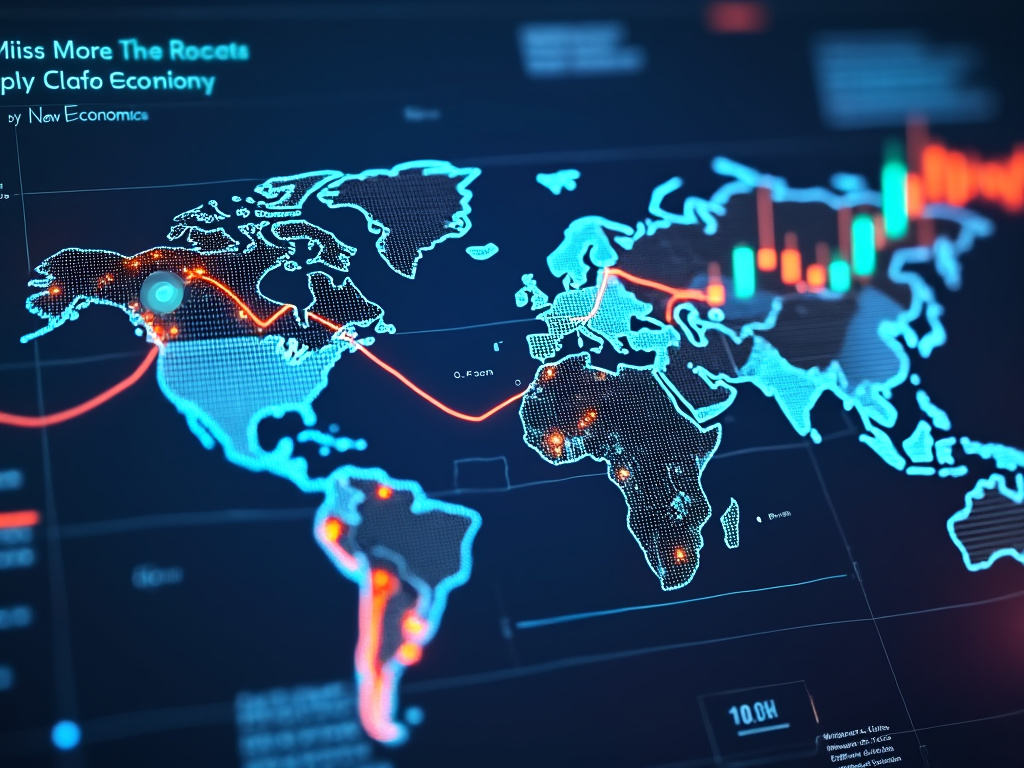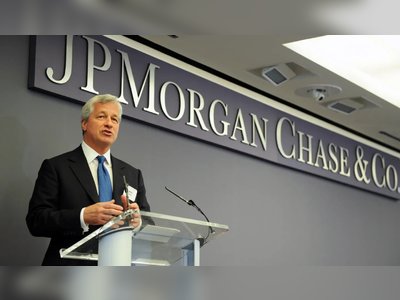
Global Economic Outlook Faces Uncertainties Amid Inflation and Supply Chain Disruptions
Key economic indicators signal fluctuating growth prospects and persistent inflationary pressures worldwide.
The global economy is confronting significant uncertainties as various regions experience fluctuating growth rates amid persistent inflationary pressures and ongoing supply chain disruptions.
According to recent data, several major economies, including the United States, the Eurozone, and China, have reported slower-than-expected growth in the third quarter of 2023.
In the United States, the latest gross domestic product (GDP) figures indicate an annual growth rate of 2.1%, slightly below analysts’ expectations.
While consumer spending remains robust, higher interest rates implemented by the Federal Reserve to combat inflation have raised concerns regarding future economic activity.
Inflation in the U.S. is reported at 4.2%, exceeding the Fed's target rate of 2%, prompting continued discussions about monetary policy adjustments.
Similarly, the Eurozone has faced challenges as inflation remains stubbornly high, currently measuring at 6.7%.
With energy prices contributing significantly to overall inflation, the European Central Bank (ECB) has raised interest rates, now at 4%, aiming to curb inflation while balancing the need for economic growth.
The latest economic indicators suggest a potential contraction in Germany, Europe’s largest economy, where industrial output has declined amid rising costs and geopolitical uncertainties.
China’s economy has demonstrated signs of weakness, with GDP growth recorded at just 3.0% for the first three quarters of the year.
The country is grappling with issues such as a real estate crisis and decreasing consumer demand, compounded by ongoing COVID-19 restrictions that hinder economic recovery.
Chinese authorities have initiated several measures to stimulate growth, including increasing infrastructure spending and providing support to key industries.
Global supply chains continue to face disruptions due to geopolitical tensions, particularly relating to the conflict in Ukraine and trade relations between the U.S. and China.
The disruption has led to increased shipping costs and delays, further exacerbating inflation.
In addition, labor shortages and new regulations in critical sectors have compounded supply chain challenges, impacting various industries worldwide.
Furthermore, the International Monetary Fund (IMF) has revised its global growth forecasts for 2023 downward, anticipating a slower recovery from the economic repercussions of the COVID-19 pandemic.
The IMF projects a global growth rate of 2.9% for 2023, compared to earlier estimates of 3.5%, reflecting the overarching economic headwinds faced by multiple countries.
Amid these challenges, efforts to transition to greener economies and invest in sustainable practices have gained traction globally.
Governments and corporations are increasingly recognizing the need to address climate change while navigating economic recovery, although balancing these priorities presents inherent challenges in the current economic climate.
According to recent data, several major economies, including the United States, the Eurozone, and China, have reported slower-than-expected growth in the third quarter of 2023.
In the United States, the latest gross domestic product (GDP) figures indicate an annual growth rate of 2.1%, slightly below analysts’ expectations.
While consumer spending remains robust, higher interest rates implemented by the Federal Reserve to combat inflation have raised concerns regarding future economic activity.
Inflation in the U.S. is reported at 4.2%, exceeding the Fed's target rate of 2%, prompting continued discussions about monetary policy adjustments.
Similarly, the Eurozone has faced challenges as inflation remains stubbornly high, currently measuring at 6.7%.
With energy prices contributing significantly to overall inflation, the European Central Bank (ECB) has raised interest rates, now at 4%, aiming to curb inflation while balancing the need for economic growth.
The latest economic indicators suggest a potential contraction in Germany, Europe’s largest economy, where industrial output has declined amid rising costs and geopolitical uncertainties.
China’s economy has demonstrated signs of weakness, with GDP growth recorded at just 3.0% for the first three quarters of the year.
The country is grappling with issues such as a real estate crisis and decreasing consumer demand, compounded by ongoing COVID-19 restrictions that hinder economic recovery.
Chinese authorities have initiated several measures to stimulate growth, including increasing infrastructure spending and providing support to key industries.
Global supply chains continue to face disruptions due to geopolitical tensions, particularly relating to the conflict in Ukraine and trade relations between the U.S. and China.
The disruption has led to increased shipping costs and delays, further exacerbating inflation.
In addition, labor shortages and new regulations in critical sectors have compounded supply chain challenges, impacting various industries worldwide.
Furthermore, the International Monetary Fund (IMF) has revised its global growth forecasts for 2023 downward, anticipating a slower recovery from the economic repercussions of the COVID-19 pandemic.
The IMF projects a global growth rate of 2.9% for 2023, compared to earlier estimates of 3.5%, reflecting the overarching economic headwinds faced by multiple countries.
Amid these challenges, efforts to transition to greener economies and invest in sustainable practices have gained traction globally.
Governments and corporations are increasingly recognizing the need to address climate change while navigating economic recovery, although balancing these priorities presents inherent challenges in the current economic climate.











